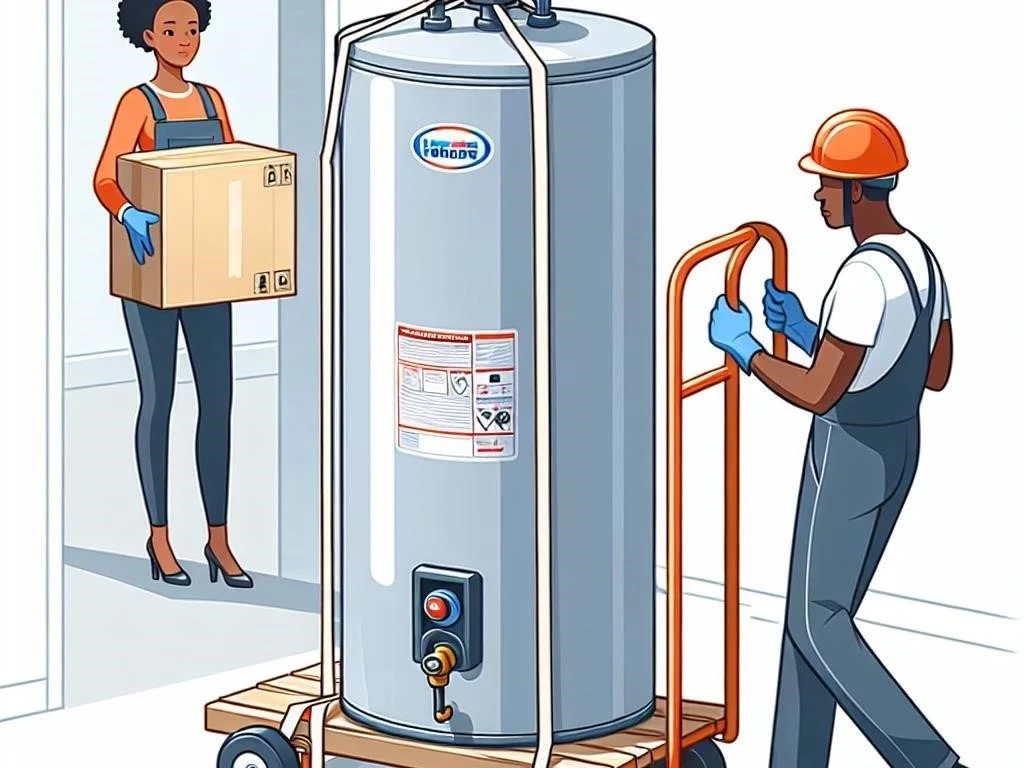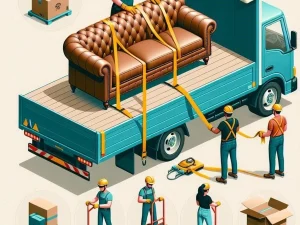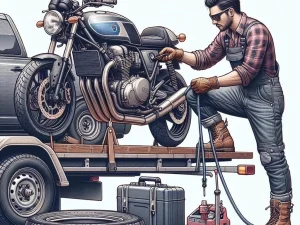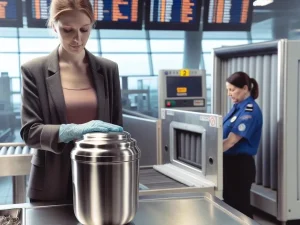How to Transport a Couch: A Comprehensive Guide
Transporting a couch requires careful planning, proper techniques, and the right tools to ensure safe delivery and avoid damage during relocation․ Follow these guidelines․
Understanding the Importance of Proper Couch Transport
Proper couch transport is crucial to ensure both safety and the integrity of your furniture․ When relocating a sofa, improper handling can lead to damage such as scratches, tears, or structural issues․ Additionally, using safe moving techniques minimizes the risk of injury to yourself and others involved in the process․ Understanding transportation logistics can also streamline the moving day, making the experience more efficient․ Taking the time to prepare and execute proper techniques can save you time and money, ensuring a successful home relocation without unnecessary stress․
Preparing for the Move
Preparing for the move is essential for a smooth couch transport experience․ Start by measuring your couch and doorways to ensure a proper fit during relocation․ Gather necessary moving supplies, including moving blankets, bubble wrap, packing tape, and a furniture dolly․ It’s also wise to have moving straps ready to assist with heavy lifting․ Create a detailed moving plan that outlines each step, from packing a couch to loading a truck․ By thoroughly preparing ahead of time, you will reduce the chances of encountering unexpected challenges during your home relocation․
2․1․ Measuring Your Couch and Doorways
Measuring your couch and doorways is a critical step in preparing for transport․ Begin by measuring the height, width, and depth of your couch to ensure it fits through doorframes and hallways․ Additionally, measure all relevant doorways, staircases, and tight spaces to identify any potential obstacles․ Take note of the dimensions, and don’t forget to account for any furniture or decor that might obstruct the path․ Accurate measurements will help avoid surprises during the move, ensuring a smooth and efficient process while relocating your sofa to its new home․
2․2․ Gathering Necessary Moving Supplies
Gathering the right moving supplies is essential for a successful couch transport experience․ Start with moving blankets to protect your furniture from scratches and damage․ Bubble wrap is also useful for safeguarding delicate upholstery․ Ensure you have packing tape to secure any coverings and a furniture dolly for easier maneuvering․ Consider acquiring moving straps to assist with heavy lifting, reducing the risk of injury․ Additionally, have tools on hand for disassembling furniture if necessary․ By preparing these supplies ahead of time, you’ll streamline the moving process and protect your couch effectively․
Packing a Couch for Transport
Packing a couch properly for transport is vital to prevent damage during the move․ Start by cleaning and preparing the upholstery to ensure it’s free of dirt and debris․ Use a vacuum cleaner for thorough cleaning, making it easier to protect the fabric․ Next, wrap the couch in moving blankets, securing them with packing tape to keep everything in place․ Consider using plastic wrap for added protection against moisture and dust․ Finally, label the wrapped couch clearly to indicate fragile areas, facilitating careful handling throughout the transportation process․
3․1․ Cleaning and Preparing the Upholstery
Cleaning and preparing the upholstery is an essential step before transporting your couch․ Start by removing any loose cushions and using a vacuum cleaner to eliminate dust, crumbs, and pet hair from the fabric․ For stains, utilize a suitable upholstery cleaner, following the manufacturer’s instructions for best results․ Allow the upholstery to dry completely before packing․ Additionally, check for any loose threads or damage that may need repair, as addressing these issues beforehand can prevent further damage during transport․ A clean, well-maintained couch will also enhance your new space’s aesthetic․
3․2․ Protecting Furniture with Blankets and Wraps
Protecting your couch with blankets and wraps is crucial to ensure it remains in pristine condition during transport․ Begin by laying moving blankets over the sofa, covering all surfaces to shield against scratches and dents․ Secure the blankets in place with packing tape, ensuring they remain tight and won’t shift during the move․ For added protection, consider using plastic wrap around the entire couch, which can prevent moisture and dust from damaging the upholstery․ Properly protecting your furniture enhances its longevity and ensures it arrives at your new home safely․
Safe Moving Techniques for Heavy Lifting
Employing safe moving techniques for heavy lifting is essential when transporting a couch․ Always lift with your legs, not your back, to prevent injury․ Before lifting, coordinate with your helpers to ensure everyone is on the same page regarding the lift․ Use a furniture dolly to move the couch over flat surfaces, reducing strain on your body․ When navigating through doorways or up stairs, tilt the couch at an angle to fit․ Lastly, communicate effectively with your team, ensuring everyone is aware of movements and obstacles during the process․
4․1․ Using a Furniture Dolly
Using a furniture dolly can significantly ease the process of transporting a couch․ Start by tilting the couch slightly to slide the dolly underneath it, ensuring the weight is balanced․ Secure the couch with moving straps or ropes to prevent it from sliding off during transport․ Once secured, push the dolly rather than pulling it, maintaining good posture to avoid strain․ When navigating through doorways, tilt the dolly carefully, ensuring you have enough clearance․ A furniture dolly not only saves energy but also minimizes the risk of accidents during the move․
4․2․ Utilizing Moving Straps for Better Support
Utilizing moving straps is an effective way to provide better support when transporting a couch․ These straps are designed to distribute weight evenly, reducing strain on your body during heavy lifting․ To use them, slip the straps under the couch and secure them around your shoulders, allowing you to lift with your legs instead of your back․ Coordinate with your partner to lift and move in unison, maintaining clear communication throughout․ By using moving straps, you’ll enhance your stability, ensuring safer and more efficient transportation of your furniture․
Disassembling Furniture for Easier Transport
Disassembling furniture can make transporting a couch significantly easier and more manageable․ Start by identifying any removable parts, such as cushions, legs, or frames, that can be taken apart․ Use appropriate tools, like screwdrivers or wrenches, to dismantle these components carefully․ Keep all screws and small parts organized in labeled bags to avoid losing them during the move; Disassembling the couch not only reduces its bulk but also allows for easier navigation through tight spaces․ This method minimizes the risk of damage and ensures a smoother moving experience overall․
5․1․ When to Disassemble Your Couch
Disassembling your couch is essential in certain situations to facilitate easier transport․ If your couch is particularly large or bulky, and you anticipate navigating tight doorways or staircases, disassembly becomes crucial․ Additionally, when moving to a new location with limited space, taking apart the couch can help fit it more easily into the vehicle․ Moreover, if the couch has detachable parts, such as legs or cushions, removing these components can reduce weight and prevent damage during transport․ Assess the circumstances carefully to decide on the best approach for disassembly․
5․2․ Step-by-Step Disassembly Guide
To disassemble your couch efficiently, follow this step-by-step guide․ First, remove all cushions and covers, placing them aside for safe keeping․ Next, locate the screws or bolts securing the legs; use a screwdriver or wrench to carefully unscrew them․ Once the legs are removed, check for any additional components, such as sectional connectors or support bars, and detach them as needed․ Keep all hardware in a labeled bag for easy reassembly․ Finally, if applicable, remove the backrest or armrests, ensuring each part is handled gently to avoid damage during disassembly․
Loading a Truck Efficiently
Loading a truck efficiently is essential for safe and organized transport of your couch․ Begin by ensuring the truck is clean and free of debris to avoid damaging your furniture․ Position the couch toward the back of the truck, ideally on its side if it’s large, to maximize space․ Use moving blankets to protect it from scratches during loading․ Secure the couch with moving straps or ropes to prevent movement during transit․ Finally, load smaller items around the couch to create a stable load, optimizing space while ensuring everything remains secure and protected․
6․1․ Securing Furniture in the Truck
Securing furniture in the truck is vital to prevent shifting and damage during transport․ Start by using moving straps or ratchet straps to secure the couch against the truck’s wall․ Ensure the straps are tight but not overly so, which could cause damage․ Utilize furniture blankets to cushion the couch and protect it from scratches․ Additionally, consider placing heavier items at the bottom and lighter ones on top to create a stable load․ Regularly check the load during transit to confirm everything remains secure, adjusting as necessary for safe transportation․
6․2․ Transportation Logistics for Safe Delivery
Transportation logistics play a crucial role in ensuring the safe delivery of your couch․ Start by planning the route ahead of time, avoiding roads that may pose challenges like low bridges or sharp turns․ Schedule your move during off-peak hours to minimize traffic delays․ Communicate with your moving team about the expected arrival time and unloading procedures․ Ensure that the destination area is clear and accessible for unloading․ Finally, double-check that all securing measures are in place before departure to prevent any movement, guaranteeing a smooth and safe delivery process․
Hiring Professional Moving Services
Hiring professional moving services can simplify the process of transporting a couch significantly․ Professionals possess the experience and expertise necessary to handle heavy and bulky items safely․ They come equipped with appropriate tools and packing materials, ensuring your furniture is well-protected during transit․ Additionally, moving companies can offer insurance options, providing peace of mind in case of damage․ When selecting a service, research their reputation and read reviews to ensure reliability․ Ultimately, investing in professional help can save time, reduce stress, and ensure a successful relocation of your couch․
7․1․ Benefits of Professional Couch Delivery
Professional couch delivery offers numerous benefits that enhance your moving experience․ Firstly, trained movers have the expertise to handle heavy and awkward items, reducing the risk of injury․ They also come equipped with specialized tools and moving supplies to ensure your couch is protected during transport․ Additionally, professional services often include insurance options, providing peace of mind in case of unforeseen damage․ Furthermore, hiring experts saves you time and effort, allowing you to focus on other aspects of your move while ensuring your couch arrives safely at its destination․
7․2․ What to Look for in Moving Services
When choosing moving services for transporting your couch, consider several key factors․ Start by researching their reputation through online reviews and testimonials to gauge customer satisfaction․ Ensure they have experience specifically with furniture moving, particularly large items; Verify that the company is licensed and insured, providing protection for your belongings during transit․ Additionally, inquire about their available equipment, such as dollies and straps, which can enhance safety․ Lastly, obtain detailed quotes to compare pricing, ensuring there are no hidden fees, and confirming their commitment to customer service throughout the process․
Relocating a Sofa: Final Steps
Relocating a sofa involves several final steps to ensure a smooth transition into your new space․ Begin by carefully unloading the couch from the truck, taking care not to damage walls or door frames․ Once inside, reassemble any disassembled parts, referring to your organized hardware bags․ Position the sofa in its desired location, adjusting as necessary for comfort and aesthetics․ Finally, fluff and arrange cushions, ensuring the couch looks inviting․ Take a moment to inspect for any damage that may have occurred during transport, addressing issues promptly to maintain your furniture’s condition․
8․1․ Unloading and Reassembling
Unloading and reassembling your couch is a crucial step after transportation․ Start by carefully removing the couch from the truck, ensuring that no surfaces are scratched or damaged․ Use moving straps or a dolly if necessary to manage the weight effectively․ Once inside your new home, refer to your organized hardware bags to reattach any disassembled components, such as legs or backrests․ Ensure all screws are tightened for stability․ Finally, position the couch according to your preference, adjusting cushions for comfort and aesthetics, creating a welcoming environment in your living space․
8․2․ Upholstery Care After Moving
After moving, caring for your couch’s upholstery is essential for maintaining its appearance and longevity․ Start by vacuuming the fabric to remove any dust or debris accumulated during the move․ If there are any stains, treat them promptly using a fabric-specific cleaner, following the manufacturer’s instructions․ To prevent fading, position the couch away from direct sunlight․ Additionally, consider applying a fabric protector to shield against future stains and spills․ Regularly fluff cushions and rotate them to ensure even wear, preserving the couch’s comfort and aesthetic appeal for years to come․














Post Comment